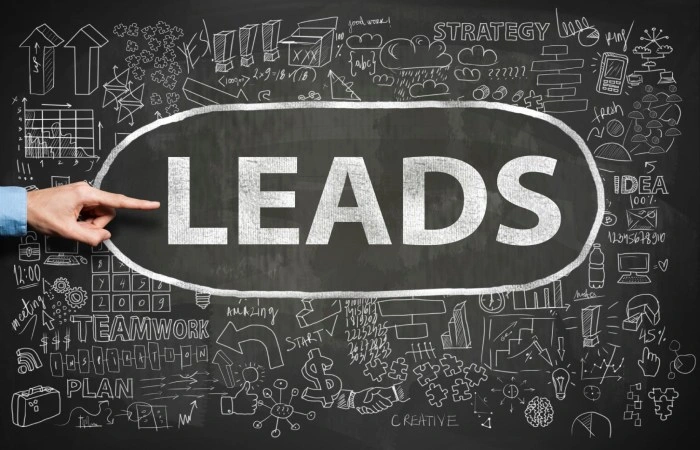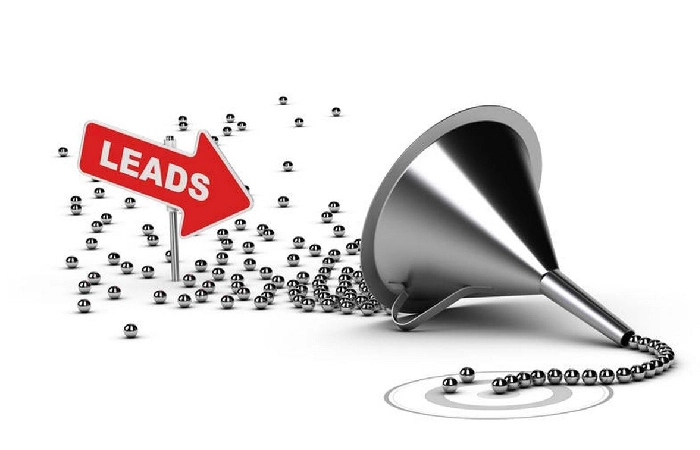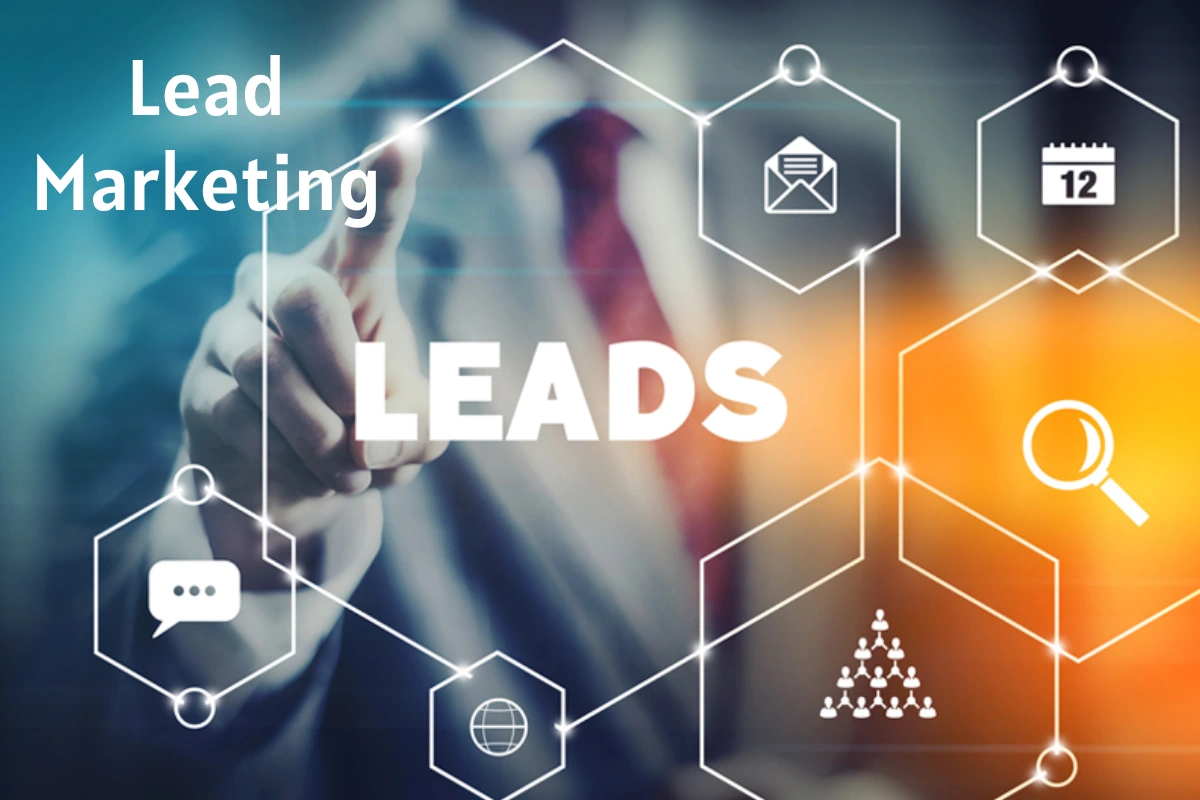Introduction
About lead marketing: Lead generation is one of the most pursued goals for marketers trying to convert and increase their profits. First, do you see what a lead is or what it means in marketing? You may know this, but those leads don’t turn into customers.
Defining what a lead is can be complex, mainly because the exact meaning can vary by department. But don’t worry because later you will understand why.
In this article, you will learn what leads are in marketing, why sales teams define them differently, why they are essential to driving more sales, and how to generate qualified leads in digital marketing. Should we start?
What is a Lead Marketing?

In online marketing, the lead is a potential brand customer who has shown interest in overwhelming your product or service.
A user converts a lead when he leaves her personal information on the company’s website to receive an offer (valuable material) or to subscribe to a newsletter.
The lead definition also includes the terms “MQL” (Marketing Qualified Lead) and “SQL” (Sales Qualified Lead), which represent the users most compatible with the company’s ideal customer profile.
The prospect becomes part of the deal pipeline, and the marketing and sales teams work collaboratively to close the deals.
Therefore, the lead has become synonymous with any visitor who provides their contact information in exchange for any Content. The leader can also contact your company for more details about your product or service.
In short, a lead is a user’s access to the company, regardless of the digital channel to which it is connected.
Lead capture is critical to business success, especially when considering low conversion rates for digital services.
In General, the Content’s Format Changed Quite a Bit During this Phase
- Written letters
- Video
- Webinars
- Infographic
- E-books
- Presentations
- Podcast
- Tutorials
- Video conference
- Among many others
Intelligent! Now the visitor has authorized the conversation and asked you to send them more exciting information about your product or service.
At this stage, the Content of the funnel’s center should be produced.
However, the work has only just begun, and from now on, a new stage begins the rapprochement (closing). At this point, the user feeds on more specialized Content, strengthening the company’s relationship.
It is a fantastic opportunity to become an authority in this field and build a relationship of trust with the potential client.
In this phase, the bottom Content of the funnel is created. This means the latent client and the company are only one step away from closing the deal.
If the strategy is performed well, it is possible to convert a potential client into a client, and, as we know, a client is the basis of a company’s being.
But do not think that the execution of the methodology ends here!
In this phase, it is necessary to continue producing Content to delight customers and convert them into promoters (promoters) of the brand, that is, defenders who spread good references about the store.
Why do You Need to Generate Leads?
After learning a bit more about what a lead is, you’ve probably already realized how important this new form of customer interaction is to your business.
But if you’re still not convinced, no problem. Here we are going to reinforce the idea a little.
Think about the companies you admire most in the market. Why are they attracting so much attention?
What do they Offer so Interesting?

Of course, the companies have become the proper authorities in a field or market niche.
One of the ways to show your knowledge on a specific topic and capture the attention of a future client is to offer quality content (as we mentioned above).
Imagine that you need a plumber and don’t know anyone in your area.
Like everyone else these days, you’ll probably plug in your computer and search the internet for a service near you.
So you will find two websites; one has a page with contact information and some photos.
In another, you click directly on a link to text that fixes your exact problem, possible causes, and even maintenance tips, so it doesn’t happen again.
Which One Would Catch Your Attention the Most? I think the Second, Right?
This happens because you need to captivate your potential consumer and draw them to your side to help you.
From there, you build a relationship of trust with someone who is already interested in what you offer and is open to a possible offer of your services in the future.
Do you see how important it is to generate leads? This way, you start the dialogue with people who are already interested in what you are selling!
Cultivate an honest and trusting relationship with the people drawn to your Content.
Take this as a unique opportunity to build relationships and win new business, even if it doesn’t seem like it.
By preserving a good relationship with possible new customers, you will make them feel more contented choosing you as a business husband in the future.
The more potential patrons you have at your disposal, the greater the chances of cumulative results for your company in the medium and long term.
To do this, you need to understand the techniques to win and capture leads and how to convert your visitors with the best strategies for your business.
What is the Importance of Lead Marketing Quality?
So is every prospect a good prospect? The answer is no. Knowing how to distinguish and identify which contacts have a high probability of converting and which ones are not very interested in your business and may not become future clients is necessary.
If you focus your sales team’s efforts on low-quality leads, you’re wasting your marketing investment and time and getting unsatisfactory results.
Plus, you’ll stop focusing on the high-quality leads who are most likely to buy your product or service in the future and who should get your total (and a little more) attention.
Recently, we have seen a change in potential customers’ search patterns. The focus is more on quality than quantity.
For this purpose, it is necessary to measure and monitor the quality of the leads generated by your business since online marketing has increasingly become one of the most important promotional tools for companies, regardless of their size, from multinationals to small and medium. Size entrepreneurs who advertise locally.
What are Qualified Prospects?
Unfortunately, there is no guarantee that a potential customer will become a customer or return to your website. However, this does not apply to the qualified prospect.
This concept includes the user who has already identified a problem and is looking for a solution: someone who can buy your product or hire your service.
When you know precisely who your qualified leads are, your marketing team can create more effective actions and Content to reach those consumers.
In this phase, the Content of your actions must be more concrete to convince the qualified leads that you offer the best solution.
But beware! It would help if you had user authorization and commitment to building a list of qualified contacts.
Therefore, never buy email lists. These people have not requested (much less authorized) to receive email from your company or virtual store.
The result is a poor image of your company and dissatisfaction among users.
The big difference in inbound marketing is building that relationship between the lead and the brand naturally and with mutual benefit. But that is not all.
Let’s go back to the middle of the funnel stage when a visitor becomes a lead. He will quickly discover that not everyone is the same.
Some of the gained leads show higher engagement levels with the Content produced, which can be measured through email marketing platforms or social media monitoring.
Networks also play a fundamental role in attracting visitors.
For example, it is possible to generate leads on LinkedIn, mainly for B2B companies. Instagram can also be a good source of information.
You can collect some interesting data through these channels, such as:
How many messages and post links were clicked? The time a user spent consuming the received Content, And how many emails were read or sent to spam.
Likes, blog comments, shares, etc., are essential metrics for qualifying a potential customer.
In short, customers with a higher level of engagement are more likely to purchase.
They are the consumers to whom you need to dedicate specific and in-depth Content. After all, they have now shown an interest in the topic and identified problems for which your company has the solution.
Knowing when to make an offer can mean the difference between a deal and user disinterest.
How do I Qualify for a Lead?
The lead qualification process is delicate and can involve tests until your company finds the best model.
There is no rule, as it depends on your product or service, the market, and investment readiness. On the other hand, some strategies have proven to be more effective than others.
Presenting superb value for money, content marketing has been confirmed to be the best strategy for generating and modifying leads.
In addition to presenting your product, you will educate your customer about the problem and how to fix it. Consumers are much more engaged with your brand and willing to spend money.
This prospect qualification process is known as prospect qualification. Score means punctuation marks in English. And a lead qualified by the marketing team is called an MQL.
Lead Scoring is, therefore, a scoring system that ranks MQLs based on the level of engagement.
As mentioned above, several platforms can help you separate leads from qualified ones. Understanding this difference is essential in choosing the ideal time to bid.
After all, you apply lead nurturing with relevant Content to create a relationship of trust between the consumer and the brand. You can have the opposite effect by making an offer in each message you send.
Qualifying leads can be a slow process in your sales funnel—different content strategies for each step. For example, the top of the funnel can contain Content that explains the customer’s problem to draw them into the funnel, where the type of Content is specifically about solutions to the problem.
Finally, the customer is sent to the end of the funnel, where the sales force takes the initiative.
What Types of Leads are there?
There are different classifications of leads, and the accepted class varies by company.
This more meaningful classification of leads is based on different stages of the lead qualification process in IQL, MQL, and SQL.
1. Information Qualified Leads (IQL)
In the early stages, the lead is classified as IQL because they don’t yet have enough information to proceed down the funnel.
At the moment they don’t know much about the company. Therefore, it is necessary to nurture them to become quality leads one day. These leads are affectionately referred to as “cold leads.”
2. Marketing Qualified Leads (MQLs)
After a good lead nurturing strategy, those interested in buying your product or service will go from marketing to qualified leads.
An MQL is involve in your product but is not ready to buy it yet.
In most cases, they need more information or attention from the marketing or sales team to make the purchase decision.
These leads are prioritized because they are hotter and closer to the bottom of the funnel.
3. Sales Qualified Leads (SQL)
A sales-qualified prospect shows immediate buying interest. At this stage, the lead can be considered a prospect and is about to become a customer.
This is because the sales team has already qualified and verified that this lead is eligible to become a customer. Therefore, from that moment, the marketing team stops acting.
What is Lead Nurturing?
As the name suggests, nurturing a lead means giving you the right way to convert information into a future customer.
It is nothing more than the trajectory of the process of converting a lead into a sale.
Suppose your contact has already shown an interest in a specific topic. In that case, you can use the Nutrition section to send emails about the subject they are interest in.
The Content of these emails should dig deep into the topic, be relevant, and keep the reader engaged.
Of course, you shouldn’t fill it with meaningless and intrusive emails. If you do this, you risk losing an opportunity to sell. By planning your strategy well, you can build trust with your prospect and take them to the next step, the sales process.
How do you Manage a Lead?

Lead management becomes a major factor when a business has a significant base of potential customers.
It is not enough to have an extensive list, it is necessary to know what to do with it, and in this sense, lead Scoring is a strategy design to help personalize content and target messages.
While lower-engaging leads need to be nurture with increasingly engaging Content, leads at the bottom of the funnel may need extra attention. You can even contact the potential customer directly.
A recent survey by Marketing Shape found that 73% of potential customers in B2B companies (business to business or business to business) are not willing to accept offers.
The lead management process goes from acquisition to intelligent data collection, qualification or Scoring of leads, and nurturing phase to the sale and retention of those who have already converted on clients.
Finally, as with most marketing strategies, there is the results measurement phase.
Remember that it is essential to analyze the metrics and consider the best frequency and time to send messages and posts on social networks and blogs.
What is the Difference between Leads and Visitors?
Many people focus on building a good website with programming and design geared towards attracting as many visitors as possible and spend good money on Adwords to increase that attraction.
Nothing wrong so far.
- The more connections you get, the more chances you have to be seen and get good deals in this powerful online universe.
- Now, look at the number of companies on your site in the last month and take note of the number of official visits your site has received.
- Imagine how amazing it would be if you could connect and connect with all these people, share material, and offer quality content to build a basis of trust in your services and products.
- What if you could learn a little more about them and have relevant data to facilitate that interaction?
In this case, you are speaking the language of potential customers: when you see your website visitors as potential customers and not as people who come and go from your website without leaving a trace.
At this point, it is worth a little analysis of your online presence:
- How is the design of your website?
- Do you collect information from your users?
- Is there a visible, easy-to-find area that invites people interested in your Content to sign up for your newsletter?
- Do your pages load fast enough that users can’t leave and interact with them?
These resources encourage interaction between interested visitors and your business through relevant, engaging, educational, and quality content that is useful to your potential customer. How to help you solve a problem or doubt.
If your website doesn’t have the tools to collect information from your leads. You’re missing out on an incredible opportunity to attract new customers and a great way to grow your business.
An efficient and intelligent way to convert your visitors into prospects is to create great landing pages that further arouse your prospect’s curiosity about topics related to your field of activity.
Conclusion
About lead marketing, Marketing leader, sales leader, prospect, customer…there are many concepts you need to master to grow your business. For individually of them, it is necessary to establish dedicated strategies. Many companies make the mistake of bundling everything together and missing out on potential revenue.
Also Read: Content Marketing Tactics for Long Term Success – A Method



